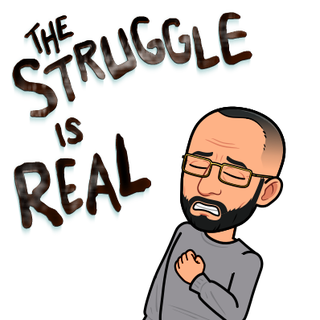Gender
Intellectual Corruption and Peer Review
On the publication of dangerous nonsense
Posted October 4, 2018
Three scholars have published a slew of intentionally ridiculous papers at major peer-reviewed "scholarly" journals designed to expose the intellectual corruption of parts of academia. The papers make intentionally absurd arguments or present highly implausible (and fabricated) data to justify overturning supposedly (or actually) oppressive and inegalitarian systems of power and status. As the authors put it:

"Underlying these alleged “social constructions” is the most deeply concerning of them all. This is the belief that in urgent need of “disrupting” is the simple truth that science itself—along with our best methods of data-gathering, statistical analysis, hypothesis testing, falsifying, and replicating results—is generally a better way of determining information about the objective reality of any observable phenomenon than are non-scientific, traditional, cultural, religious, ideological, or magical approaches. That is, for grievance studies scholars, science itself and the scientific method are deeply problematic, if not outright racist and sexist, and need to be remade to forward grievance-based identitarian politics over the impartial pursuit of truth."
The full article revealing what was essentially an elaborate intellectual sting operation -- designed to reveal the massive failures of peer review in some disciplines -- can be found here.
This was just exposed yesterday. Twitter is alight with academics and nonacademics debating and trying to figure out what it does and does not mean. At the end of this essay, I link to some "threads" on Twitter (which are sort of like mini-blogs).
In this essay, however, I have a single focus. I simply quote some of the text, terms, and ideas that appear in a few of the papers published by this team. The idea here is to allow you to see enough of what has been accepted in peer-reviewed "scholarly" journals for you to make your own decision about what it means. Far more is available via the article linked above.
Except for parenthetical statements which I flag as interjections (LJ: interjection...) everything else here is from those articles.
PAPER 1: Title: Human Reactions to Rape Culture and Queer Performativity at Urban Dog Parks in Portland, Oregon
Journal: Gender, Place, and Culture
Keywords: animaling, Black feminist; criminology; feminist geography; queer geography; rape culture.
(LJ: This paper addresses dog oppression, dog rape and dog rape culture).
Selected text:
From the abstract:
(2) What issues surround queer performativity and human reaction to homosexual sex between and among dogs? and (3) Do dogs suffer oppression based upon (perceived) gender?

Excerpted Text:
In the example of the urban dog park, it is natural to see how such a moral inconsistency compares against McKittrick’s (2006) concept of the hegemonic presence of the white male subject as an ethical standard against which other individuals, races, and dogs are to be compared.
Throughout this work, the word ‘rape’ describes human perceptions of dogs forcefully penetrating other dogs who have given no indication of wishing to engage in sexual activity (see Palmer 1989). Of course, the following caveat applies. Because of my own situatedness as a human, rather than as a dog, I recognize my limitations in being able to determine when an incidence of dog humping qualifies as rape. In particular, from my own anthropocentric frame, it is difficult if not impossible to ascertain when canine sexual advances are un/wanted, or when they are rapes rather than performances of canine dominance, which introduces considerable unavoidable ambiguity in my interpretations of this variable.
(LJ: interestingly, the above qualifications produced no requirement from the reviewers or editor that the author actually NOT discuss dog rape).
From 10 June 2016, to 10 June 2017, I stationed myself on benches that were in central observational locations at three dog parks in Southeast Portland, Oregon. Observation sessions varied widely according to the day of the week and time of day. These, however, lasted a minimum of two and no more than 7 hours and concluded by 7:30 pm (due to visibility).
(LJ: This is an obvious red flag. What kind of normal human, let alone academic research-oriented scholar with students, teaching responsibilities, and administrative roles can spend 2-7 hours/day EVERY DAY except in rain observing dogs? But back to the text. Note: The Headers/subheaders shown here are from the published paper, they are not mine)

Results
Navigating ‘Dog Rape Culture’
Female human companions attempted to intervene in a dog’s rape/humping incident, regardless of the dog’s gender, 98% of the time. Male human companions were far less likely to intervene in the rape/humping of a female dog than a male dog, with interventions occurring only 18% of the time.
(LJ: Another red flag. These differences are TOO HUGE TO BE CREDIBLE. Much feminist scholarship shows sex differences on all but a few variables are quite small; furthermore, almost no effects in the social sciences of any type are these stark).
Oppression of dogs
Gender had an apparent effect on the way a dog was treated (cf. Kydd and McGreevy 2017). Male human companions referred to their male dogs as ‘buddy’
There was not a single incident when I overheard the word ‘bitch’ being used to refer to a female dog by a female human companion, but this word was heard a total of 108 times by male human companions.
Frequency of leash use was also more common among male human companions than female human companions. Males were 68% more likely to leash their dogs than females.
Discussion
As a theoretical and interpretative grounding for my research, I’ll consider feminist geography theory and apply Black feminist criminology categories through which through which my observations at dog parks can be understood.
Social structural oppression
While there are rich similarities between the oppressiveness intrinsic to homeless spaces available by viewing dogs as inherently disenfranchised from the human sphere (Rose and Johnson 2017), Potter’s first prism is particularly helpful in viewing structural oppression in urban dog parks in two distinct ways: the male human response to queer performative acts of male dogs and acts of rape/humping perpetrated upon female dogs.

The oppressed dog
Simply put, rape is normative in rape cultures and overtly permissible in rape-condoning spaces, and therefore (human and canine) victims of rape suffer the injustice of not being seen as victimized by so much as complicit in having been sexually assaulted ...
PAPER 2: WHEN THE JOKE IS ON YOU: A FEMINIST PERSPECTIVE ON HOW POSITIONALITY INFLUENCES SATIRE
Journal: Hypatia
(LJ: This paper argues that social justice activists can make fun of others but no one can make fun of social justice activists).
Ultimately, ironic, satirical, and double-voiced humor is powerful in its ability to defamiliarize established power structures and disrupt and destabilize hegemonic certainties. Indeed, it “reveals the ‘dirt’ behind reputable institutions, roles, groups, and individuals: the government, the bureaucracy, the professions, the rich, the powerful, the celebrated” (Davis 1993, 157).
(LJ compare above with...)
Given this function of ironic, double-voiced, and satirical humor and its potential to disrupt oppressive power structures, it is a matter of grave concern when attempts are made to use the comedic mode to attack, belittle, and discredit social justice-oriented efforts.
“Treating privilege-preserving epistemic pushback as a form of critical engagement validates it and allows it to circulate more freely; this . . . can do epistemic violence to oppressed groups” (Bailey, 2017, 881)
[LJ: This next study advocates coerced social justice support speech in college classrooms]:

Ultimately, Applebaum draws on the guidelines of Lynn Weber’s classroom for insight into how to deal with this potential issue within academic settings: The guidelines state that students will “acknowledge that racism, classism, sexism, heterosexism, and other institutionalized forms of oppression exist” and “to agree to combat actively the myths and stereotypes about our own groups and other groups” (in Applebaum 2010, 103).
Individual professors and university administrators can introduce simple but formalized methods for adjudicating and then sanctioning members of culturally dominant groups who misuse irony, satire, hoaxes, and double-voiced humor to preserve hegemony over their own epistemic terrain and inhibit the ability of marginalized groups to contribute to knowledge production.
PAPER 3: OUR STRUGGLE IS MY STRUGGLE
Journal: Affilia: Journal of Women and Social Work
(LJ: This one is a bit subtle and warrants some introduction. Where have you heard "My Struggle" before? It is the English translation of Mein Kampf, Adolf Hitler's rambling manifesto of nationalistic hate. In this piece, the authors purposely took sections of Mein Kampf and translated the ideas into a feminist context. You can see this by the addition of "Our Struggle" to the original's My Struggle. They got the paper published in a leading feminist social work journal, raising the perennial question, Who's the Nazi Now?
Below, I first excerpt Mein Kampf, followed by an excerpt from the published paper).

Excerpt from Mein Kampf:
The goal of a political reform movement will never be reached by enlightenment work or by influencing ruling circles, but only by the achievement of political power.
Excerpt from Our Struggle is My Struggle:
Third, a movement seeking cultural reform cannot succeed only by raising awareness, applying scholarship, or convincing privileged people (mostly white men) in power. It must find/create its own cultural and political influence.
Excerpt from Mein Kampf:
Every world-moving idea has not only the right, but also the duty, of securing, those means which make possible the execution of its ideas
Excerpt from Our Struggle is My Struggle:
Every movement that might help raise people from oppression has a duty, not merely a right, to take steps through which it can translate its theories into praxis.
Excerpt from Mein Kampf:
The nationalization of the broad masses can never be achieved by half-measures, by weakly emphasizing a so-called objective standpoint, but only by a ruthless and fanatically one-sided orientation toward the goal to be achieved.

Excerpt from Our Struggle is My Struggle:
Fifth, though change may come in stages, feminism cannot limit itself to half-measures in solidarity or be selfish. These manifest under choice feminism (Ferguson, 2010), for example, by placing emphasis upon a so-called objective standpoint (cf. hooks, 2000, p. 8) or through pursuit of aims that appear feminist but actually support neoliberalism (Rottenberg, 2014, 2017). Though what constitutes justice is itself multifarious and pluralistic, only a single-minded alignment with solidarity for effecting the goal of justice will suffice (cf. Hirschmann, 2010; hooks, 2000; Patel, 2011; Russell & Bohan, 2016).
(LJ: There is far more where that came from, but I think its enough to give you a flavor of what Our Struggle is My Struggle is all about)
------------------------------------------------------------------------------
This is now me (LJ). There were seven such accepted papers, and quite a few others that were in various stages of peer review, often with laudatory comments. There is a hot debate among academics about the meaning of the publication of these extreme, bizarre, and some would argue deeply intolerant and dangerous papers.
Here are three additional sources:
Several academics have argued that the message is not so much radical politics distorting peer review as peer review being broken, and publishes ridiculous stuff (regardless of political stripe). So far, most of that discussion has occurred on Twitter. Here is one thread (linked tweets) making this point:
Journals Publish Lots of Ridiculous Stuff, Not Just Ridiculous Feminist Stuff
Here are two twitter threads of mine on this:
My reaction when it first broke
Here is a nice twitter thread that quotes some of the most laudatory comments by peer reviewers, and showing that some of the criticisms in peer review involved requesting the authors to make their arguments more absurd, more draconian, or more intolerant:
Excerpts from peer reviewer comments.
-----------------------------------------------------------------
As usual, please read my Guidelines for Engaging in Controversial Discourse before replying here. In short, no snark, personal insults, and please keep it short and on topic.




